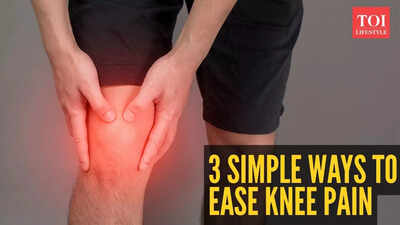ARTICLE AD BOX

According to recent findings from Harvard Health Publishing, simple non-drug therapies such as knee braces, hydrotherapy, and regular exercise can significantly reduce pain, stiffness, and mobility issues linked to knee osteoarthritis.
The research highlights that these natural methods, backed by clinical evidence, offer safe and effective relief compared to long-term medication use. By combining physical support, water-based movement, and muscle strengthening, patients can manage chronic knee pain naturally and maintain healthier joints without invasive treatments.
1. Knee braces: Supporting stability and reducing pressure
Knee braces are among the most effective and accessible tools for easing osteoarthritis-related knee pain.
By redistributing body weight away from the damaged part of the joint, a properly fitted brace helps reduce stress on the knee, allowing smoother and less painful movement. Patients often experience improved balance, stability, and confidence while walking or standing for longer periods.Experts recommend using an “unloader” or “support” knee brace, depending on the severity of arthritis and pain location. An unloader brace shifts weight off the affected area, while a support brace provides general compression and reinforcement to the joint. For best results:
- Have your brace fitted by a physiotherapist or orthopaedic specialist to ensure comfort and proper alignment.
- Wear it during weight-bearing activities like walking, standing, or climbing stairs.
- Combine its use with gentle stretching and strengthening exercises to enhance joint stability.
- Wearing a well-fitted brace regularly can help patients remain active, reduce daily discomfort, and delay the need for invasive treatments like injections or surgery.
2. Hydrotherapy: Gentle resistance and pain relief through water exercise
Hydrotherapy, also known as aquatic therapy, involves performing exercises in a temperature-controlled pool, usually under the guidance of a physiotherapist.
The buoyancy of water supports body weight, relieving pressure on the knees and other joints, while the water’s natural resistance helps build strength safely.Exercising in water is ideal for people who experience pain during land-based workouts or have limited mobility. The warm water also improves circulation, flexibility, and muscle relaxation, which can significantly ease stiffness.Here’s how to make hydrotherapy more effective:
- Try walking or gentle leg lifts in waist-deep water for 15–20 minutes.
- Use pool noodles or resistance paddles for light strengthening.
- Keep water temperature between 31–33°C to relax muscles and reduce inflammation.
- Aim for 2–3 sessions per week, depending on pain tolerance and stamina.
Hydrotherapy not only reduces pain but also encourages regular physical activity without aggravating the condition — a key step in long-term arthritis management.
3. Exercise: Strengthening without strain
Regular, low-impact exercise is crucial for maintaining joint health and reducing knee pain. Activities such as walking, swimming, cycling, yoga, and resistance training help strengthen muscles that support the knee, particularly the quadriceps and hamstrings. Stronger muscles act as shock absorbers, lessening the impact on the joint and improving overall stability.Key guidelines for exercising with knee arthritis:
- Begin with short, 10–15 minute sessions and gradually increase as endurance improves.
- Focus on low-impact workouts that do not cause pain or swelling.
- Include gentle stretching before and after exercise to maintain flexibility.
- Use stationary bikes, water workouts, or elliptical machines to reduce joint stress.
Avoid high-impact movements like running, deep squats, or jumping unless advised by a physiotherapist.Consistency is more important than intensity. Exercising most days of the week can improve circulation, reduce stiffness, and promote long-term joint health — making daily movement easier and less painful.Incorporating these simple, natural therapies into your routine can make a lasting difference in managing knee pain and stiffness. By combining support from a brace, the soothing effects of hydrotherapy, and the strengthening benefits of gentle exercise, you can protect your joints and move with greater comfort and confidence. With consistency and proper guidance, these non-drug approaches offer a safe, sustainable path to healthier, pain-free knees.Disclaimer: This article is for informational purposes only and does not constitute medical advice. Always consult a qualified healthcare professional before making any changes to your health routine or treatment.

 2 hours ago
7
2 hours ago
7









 English (US) ·
English (US) ·